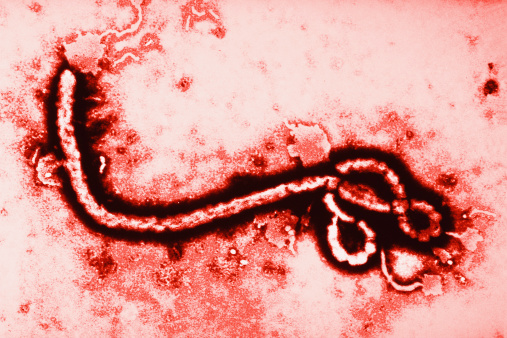 The deadly outbreak of Ebola virus in West Africa is the worst on record, with over 603 deaths reported as of July, 12, 2014 (according to the CDC Ebola outbreak update). The virus is confirmed in Guinea, Liberia and Sierra Leone ─ and the crisis appears to be far from over.
The deadly outbreak of Ebola virus in West Africa is the worst on record, with over 603 deaths reported as of July, 12, 2014 (according to the CDC Ebola outbreak update). The virus is confirmed in Guinea, Liberia and Sierra Leone ─ and the crisis appears to be far from over.
The geographical complexity of the current crisis highlights one of the most crucial obstacles to successfully containing it — the reluctance of those infected to come forward. Because Ebola spreads through direct physical contact between infected and uninfected individuals, successful containment relies on the isolation of Ebola patients, and preventive quarantine of anyone with whom they may have come into contact. Unfortunately, in the current outbreak, many people with possible symptoms have chosen instead to shelter with their families or local communities, where they risk setting off new cycles of virus transmission.
Why are people unwilling to come forward? One of us (John Dye) interviewed over 100 survivors of previous Ebola outbreaks in Uganda and asked them exactly this question. Some thought they may just have malaria or dengue, which are hard to differentiate from Ebola in the early stages, and they were afraid of contracting Ebola from other infected patients when quarantined in the hospital. Others worried about the stigma that could attach to them and their families, that they might lose their jobs, or return from the hospital to find their home burnt down and belongings destroyed. Many feared they were going to the hospital to die, and to die alone, away from their families. Hanging over all of these conversations was the unspoken understanding that there was no treatment for Ebola available to them. Sadly, the situation today remains the same.
While careful supportive care does indeed improve a patient’s chance of survival, case fatality rates for Ebola virus disease remain extremely high, at 50-90 percent. We believe that the availability of an effective drug for Ebola would save lives, not least because it would encourage infected individuals and their families to seek treatment, thus curtailing the spread of the virus.
The first outbreak of Ebola was in 1976 — nearly 40 years ago — so why is there yet no cure?
Paradoxically, the last decade has seen tremendous advances in Ebola virus research. We have learned much about its behavior in nature, how the virus exploits its hosts and subverts their immune systems to multiply, and how it causes disease as a result.
In the U.S., with funding from both the National Institutes of Health (NIH) and the Department of Defense (DoD), scientists are applying these basic discoveries to come up with new approaches to prevent and treat Ebola virus infections. For example, we are part of an NIH-funded research consortium whose goal is to develop a ‘cocktail’ of antibodies-virus-fighting immune proteins-that could be infused into patients to block Ebola virus infection. We and others are also receiving support from the DoD to discover drugs that shut down the ability of Ebola to infect human cells.
To understand why our Ebola drug cupboard is still empty despite recent progress, it is important to consider how pharmaceutical drugs are typically developed. Research scientists, often in academic institutions or small biotech companies, make a discovery that suggests a possible clinical application. After laying the groundwork, they pass the baton to a company with the expertise and deep pockets necessary to carry a potential drug through the protracted, complex, and expensive process of optimization, animal testing, manufacture, and clinical trials that will (with lots of luck) culminate in regulatory approval of the drug for human use.
This is where the process stalls for ‘orphan’ diseases like Ebola. Pharmaceutical companies are understandably unwilling to invest the considerable resources needed to develop drugs against a disease that currently infects only a few thousand people every few years in resource-poor countries, especially when there is little chance they will recoup their investment, let alone turn a profit.
Our experience with HIV/AIDS and hepatitis C teaches us that once we have acquired the basic scientific knowledge, it is possible to develop antiviral drugs that save lives. Diseases like Ebola should be no exception. In this case, the hurdles we face are not scientific, but rather economic and political. To bridge the gap in the drug development process, we will need new, creative models that engage governments, academia, pharmaceutical companies, private philanthropic organizations, and even individual citizens. The essence of emerging viral threats like Ebola is their transnational and unpredictable nature, and we need to be ready.
This piece first appeared on The Huffington Post. It has been updated to reflect the latest case numbers.
Opinions, interpretations, conclusions, and recommendations are those of the author and are not necessarily endorsed by the U.S. Army.

